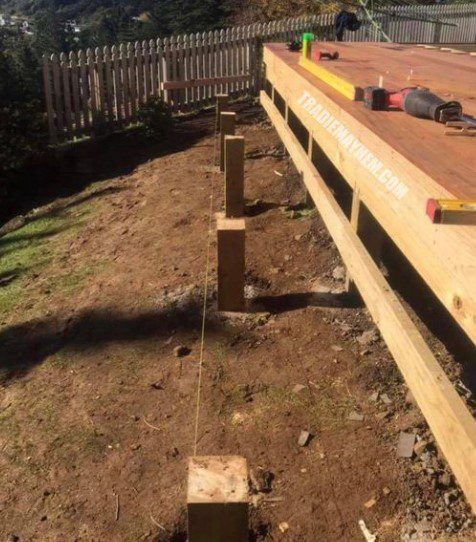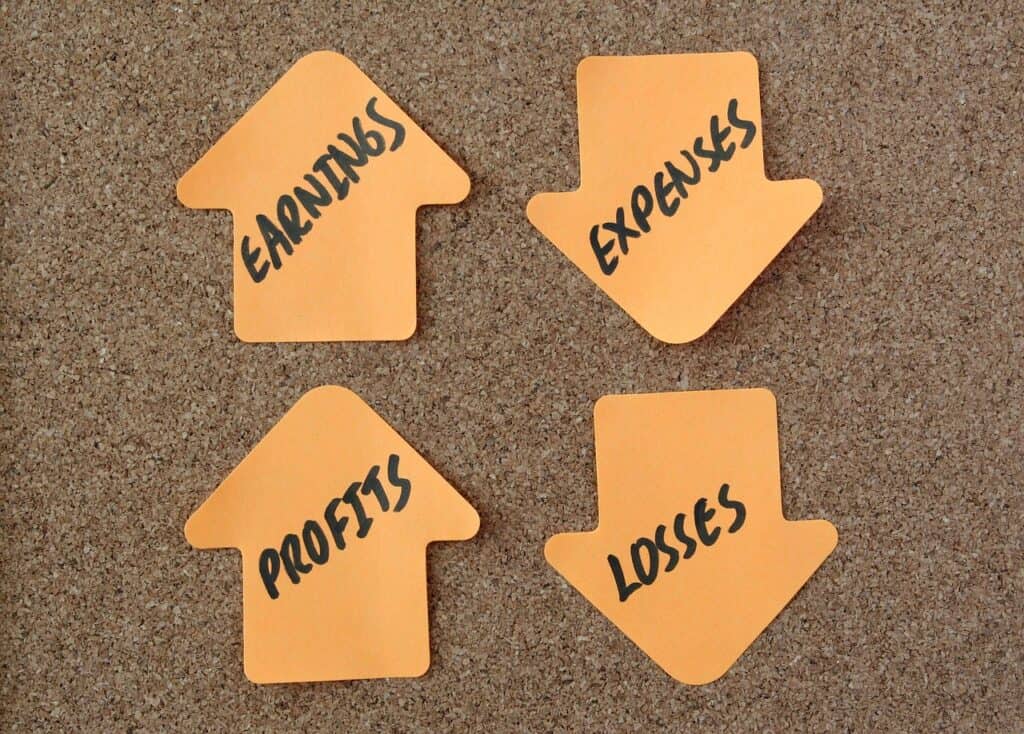For an occupation that should have a lot going for it, the reality is many landscaping businesses are unprofitable, or not doing that great.
Large architectural landscape businesses fare ok (generally), as they mainly deal with corporates and governments.
I am not including lawn care or ancillary services in this article.
Landscaping is much more than that.
It is often thought of as the dream job for creative people who like to be working outdoors with nature.
Not only that, those who come out of University with a landscape architectural degree don’t appear to have high in-demand employment prospects.
With all the talk on the environment and a growing economy, surely you would think the opposite would be the case.
It is number 37 of the top 50 in-demand professions and trades in Australia which is a known environmentally conscious country.
Another figure I have seen in google searches is:- An 8% increase in demand for landscapers from 2022 – 2030. but the definition of landscapers is quite broad.
From my understanding, the statistics are including garden maintenance which is part of the scope of landscaping.
It is only one part and is classified as soft landscaping. So…
Why are so many Landscaping Businesses Unprofitable?
In truth, many are not unprofitable.
Just not very profitable with skinny profit margins of around 3-5%. It would only take one job to go over budget to push some of these marginal businesses over the edge.
Only about 5% of landscaping businesses are making up to 25% profit
15% make between 5-12%
The others fall into the very marginal category
As well as landscape architects, who essentially are involved with urban planning design for more significant developments or redevelopment.
There are a lot of medium size businesses involved in private residential and public hard and soft landscaping projects, working for landscape architects as contractors, and contracting to private residential owners.
Five Things you can do to make your Landscaping Business Profitable.
1. Have a Properly Structured Business Plan

This is the number one reason that not only landscapers, but the reason many businesses end up in a financial body bag.
Business plans need to be reviewed regularly.
If you are not doing this, then when you discover some cost is blowing your budget, you are looking at how to divert resources from somewhere else to plug the financial hole.
Maybe you have to sack someone.
That can come with its own set of unique problems.
Don’t ignore your business plan.
It doesn’t matter if you’re a sole operator or employ 150 people.
Keeping your finger on the financial pulse will show you where you need to improve your pricing or become more efficient in allocating resources.
Doing a refresher course will help. Most are updated regularly. Doing one may even shine a light on some problems you have and give you a fresh perspective.
Sometimes we get so wrapped up in our own affairs we become oblivious to the advances taking place around us.
There are plenty of good courses around that can be done online at times convenient to you.
They are usually tax deductible. So win, win.
2. Develop a Safe Work Culture.
I get sick of hearing this too. But it is a major part of any business now.
If you haven’t got systems in place and a serious accident occurs, you will find yourself snowed under with bureaucratic visits and paperwork.
Then visited by official-looking characters from a government agency/insurance company who want to know everything about you and your business.
Then, most probably, you will find yourself dressed in your best suit, standing in the dock looking at a Judge.
That is not far-fetched either.
When landscapers are out on the job there is the potential for injury due to…
- Uneven ground – Trip hazards.
- Machinery – Skid steers (bobcats), Excavators, Trucks. Yes, a lawn mower is a machine.
- Heavy materials – Rocks, Concrete blocks, Timber, and Concrete
- Constant bending down – Planting out or doing maintenance.
- Adverse weather conditions. – Hot or wet weather.
- Wildlife – Snakes for example.
Taking precautions is not hard and need not be costly. Make a to-do list for the beginning of each project.
- Do, Site surveys. Underground services, Ease of access, Laydown area for deliveries?
- Keeping first aid kits in vehicles
- MDS registers for chemicals used on the site. At the work depot as well.
- Having workers wear appropriate footwear and clothing.
- Have a large potable water container available
- Housekeeping – keeping the site tidy reduces risk.
- Power leads should be plugged into power boxes with a trip switch
- Power tools should be tested and tagged. This is a rule in most places now.
- Battery tools are a workaround, but the charger needs to be tested and tagged.
Looking and acting professionally brings its own rewards and goes a long way to keeping your insurance premiums at a reasonable level.

3. Keep your Machinery Reliable

And use only competent qualified operators on the job site.
Make it the operator’s responsibility to keep the machine clean and check the oil and water levels daily.
Have a set area for refueling, with a spill kit on hand.
Any machine/truck/vehicle should be thoroughly cleaned before going to a new job.
Soil contamination is a common issue not only on construction sites (oil, etc;), but also to help stop the spread of soil-borne viruses that could affect crops in agricultural areas.
As a landscaper, you are in effect part construction part agriculturalist…
Machines are great when working, but if they break down that lost productivity is not billable.
Good operators can maximize productivity while keeping the wear and tear of the machine to a minimum.
4. Crew management and Money:-

Landscaping is more than digging holes and putting in plants.
Hard landscaping includes fencing, decks, steps, gazebos, fish ponds, and water features, as well as garden designs, lighting, concrete or paved paths, and even small timber bridges.
Plus civil works to direct water runoff, excavation for retaining walls…
So a bit of everything, with lots of different quality materials.
And prices I might add.
Where do you find these trades…? As I said above landscaping is more than mowing lawns, laying turf, and pruning hedges.
If you have some of the skills above… great.
You may have started doing smaller jobs (best place to start), and were able to be on-site managing the flow of work.
Not to mention keeping the client pacified if they were complaining about something.
As your reputation builds so does your business.
Delegation is one of the trickiest parts of any job. Be picky if you are hiring.
You don’t want a supervisor who abuses the client (it does happen).
That will cost you. Sometimes more than you have allowed for.
As a site manager, apart from electricians and *plumbers, I always preferred in-house labor to contractors or labor hire.
Electricians and plumbers are often self-employed contractors and are specialists in their craft. And, there will be times you need specialized contractors.
A patterned-colored concrete contractor could be one example.
An Arborist or Tree removers could be others.

If you can afford it, having your own skid-steer (Bobcat) can pay dividends, as it can also be hired out at the times you don’t have work for it.
If you are hiring a skid steer and operator and have plenty of work in the pipeline, you may be able to have them reduce their hire rates a little.
Maintenance of your work also plays a part in the financial health of your business.
It can be a selling point on a new project. “Six months Free Maintenance”
A good estimator will know how to spread the cost across the project.
It sounds shady, but some work will include warranties and they are a built-in cost.
On smaller jobs, one or two qualified people with an *unskilled person can accomplish a lot, given the proper support, tools, materials, and other resources.
Hard landscaping generally involves only basic plumbing, like irrigation lines, ag drains, or stormwater, which can be done by a good handyman or some other tradesman willing to turn his hand to the task.
*Still when it comes to labor pricing it should still be quoted at plumbing rates.
There are plenty of estimating software programs on the market, and Forbes has a rough guide of costs here
Some landscaping-specific hardcopy estimating guides are available from the landscape library
Many people can give an estimate off the top of their heads based on experience.
Often it is accurate, but a better idea would be to give it as a ballpark figure, then do a proper takeoff and estimate, then get back to your client with a definitive number.
*It can be challenging for an unskilled person to be trained up in landscaping.
How to build a timber retaining wall or a block retaining wall, a set of stairs, a deck, or how to set out a job.
Or gaining knowledge of plants, propagation, the various diseases that affect them, chemicals, the ideal growing positions for various plants, etc., etc.
It all takes time, and from what I have seen landscaping is under-represented in government training systems anywhere.
Related Article: —Having your Experience Recognized—- Click Here

5. Do a Profit and Loss Summary after each job.
Actual costs vs Estimated costs.
What could you change in your contracts?
Not reviewing this after each job leaves you wide open to nasty surprises.
It can also help you fine-tune your project estimating pricing, making it more competitive, while still being profitable.
It doesn’t take long. You can compare it to similar jobs too, the data will show which areas you can build some standardization into your pricing
Rearranging your contract payment schedule can also bring benefits, where your outgoings are covered before payment on them is due.
You can do this by having a mobilization clause in your contract.
Conclusion
Is starting a landscape business worth it?
Mowing lawns and garden maintenance are very competitive.
Sometimes I think it is a race to the bottom.
Get some training or learn the business and target more lucrative contracts.
One major benefit of this is that the skills involved in more complex jobs are transferable to other jobs.
If you set up your own business there is scope to move to another related area of work if one area is in a downturn.
Not all landscape designs need be to created by landscape architects.
They are usually involved in public works or high-end corporate-style developments.
You can contract with them for certain parts (It looks good on your resume).
There is room for you somewhere between mowing lawns and high-end developments.
Landscaping is a skill of many parts. If you have the land then farming trees for landscaping is profitable (you may have seen them on the back of semi-trailers with the root ball wrapped in hessian).
To greenhouses for various plants grown from seedlings.
Then the building, concreting, rock walls, lighting, and maintenance.
It can be a very satisfying career, and you will no doubt meet some interesting people.
Some Useful Resources.
There is no experience like hands-on experience.
You may have seen this landscape design resource online. It has been around for a while
. It is pretty good value and has some good information. See a review here.
You have most likely seen Teds Woodwork in your online travels.
I bought it in 2010. It is still updated with new stuff.
The IAP college has a landscape course that can be completed online.
It is a certificate program that is helpful and ideally suited to someone wanting to start a business.
Thanks for reading.
Michael.










